Travel Guide to Egypt
- cjiao3141
- Jun 2, 2022
- 11 min read
Updated: Jun 9, 2022
Itinerary
Date | Location | lodging | Activities |
Day 1 | fly from JFK New York to Paris | shower at Air France lounge | Check out Paris during 9 hrs layover |
Day 2 | Fly from Paris to Cairo | Marriott Mena House | Giza Pyramid |
Day 3 | Cairo | check out, take the overnight train to Aswan | the train arrives around 10am and the cruise picked us up at the train station |
Day 4 | Aswan | River Cruise | High Dam and Philae Temple. |
Day 5 | Aswan | River Cruise | Abu Simbel |
Day 6 | Luxor | River Cruise | Edfu Temple, Luxor Temple and the enormous Temple complex of Karnak |
Day 7 | Luxor | River Cruise | Hot balloon sunrise, Theban Necropolis, valley of kings |
Day 8 | Luxor | Hilton Luxor | relax at hotel and enjoy local food |
Day 9 | Fly from Luxor to Cairo | Hyatt Cairo West | arrive around 3 or 4pm, pick up rental car, enjoy Pyramid sunset |
Day 10 | Cairo | Hyatt Cairo West | Alexandria |
Day 11 | Fly back from Cairo to JFK New York | late check out | Egyptian Museum, Al-Azhar Mosque, Khan el-Khalili market |
Where we stay – hotels and cruise
Mena House Marriot
Hilton Luxor
Hyatt Cairo west
Where to eat and drink
sugar cane juice in Luxor city
Sofra Restaurant & Cafe
Wadi EI Nil
El Sheikh Wafik
Tree Lounge Pyramid Branch
Al Sheikh Abudullah
Carol Bar
Before trip prep – What to pack and what to expect
What to pack and what not to pack
Insects speller/painkiller
Medicine
Some cash, credit card, and debit card can withdraw money
Scarf, long pants, maxi dress, long sleeve shirts, hats
Tripod (this is tricky, but I used my big one in the hotel and mini one in the temples etc)
What not to bring
Drone!

One of our members brought his DJI drone (~600$) to the airport and he was kept in separate rooms for more than 2 hours. The local customs took his drone because it was not allowed to bring it to the country. He will need to pick it up on the way back. We already arrive late (around 1am) and he got back to hotel around 5am. Imagine how much trouble you could get into if you bring that. On the way back, he has to be in the airport 3 hours before just to pay 30$ to bribe get his drone back.
What to expect
Tips culture
I came from Asian country, so we usually don’t have tip culture. However, here in Egypt, Tip is a major way of life. Kids learn that basically if they do anything for others, they need to ask for tip. If you give 10 EGP, they gonna ask for 100 pounds. It was very stressful to do that daily. For example, we had this tour as part of the Nile cruise. Each day our tour guide will take us around. Then we need to tip the driver, tip the cruise people, and horse wagon driver. The driver was 40 EGP per person. The cruise was like 5 $ per day. The tour guide was like 10$ per day.
Bargain
All the places here, the merchants would give you a crazy high price to start with. You will need to cut at least to 1/4 to start from there. For example, we see a lady bought an alabaster vase for 250 EGP. The original price merchant asked was 1000 EGP. To some point, everything can be negotiated, even for the pyramid entrance ticket. So we visited the Giza pyramid on our first day and the hotel atm didn’t have enough cash. We were told that Giza will accept credit cards, but when we arrived, they used all kinds of reasons saying their machine was broken or out of paper etc. Then we were like, we don’t have enough money. On that day we were supposed to pay 2000egp for four people, but we only have 1800 EGP, then we told the staff we only have 1500 EGP, the staff just edited the ticket price to 1500 EGPon the receipt. This might not work every time, but in our case, it worked!
Ticket tricks
If you still have your student ID, make sure to use them when you are here. It can at least cut your fee in half. In the valley of Kings, the ticket covers three tombs. At each tomb, they will punch the hole on that ticket. I noticed that the staff barely check the ticket. All Egyptian site tickets look similar. Some will scan the QR code, but the valley of kings will not. Technically you can use your ticket from another site. In my case, we bought the normal ticket, but I could not find it while visiting the second tomb, so I just grab the ticket from other temples and it works!
Arrival-Visa and transportation
Visa

Initially, we tried to apply for the E-visa from the embassy website. It turns out to be that you have to be part of the tour group to use the E-visa. Then we decided to use visa on arrival. How it works, once your plane landed, you will go to any of the banks to buy the visa (25$ cash per person). Make sure you bring enough cash for that because they don’t take credit card. Once you have the visa sticker, you will go through the custom to get it stamped. The whole process is quick and easy.
Internet

To make your trip smoother, I suggest you buy a local SIM card. There are three company counters after you pick up the luggage (before go out the airport). Orange, Vodafone, and (AAA) are the three companies. According to my research and experience, Vodafone and Orange are good. It was just that night, Vodafone ran out of SIM cards, so we all got Orange. The lowest option for 18 G is about 16$. However we later found out that the SIM will not work after using 10G, so make sure you get enough based on your usage. I mainly use that for social media, google search and uber. The SIM card provides internet and local phone call, so you can use it to make appointments.
Transportation
There are two major companies: Uber and Careem. I heard Careem was acquired by Uber and mainly has market in middle East area. Here you will have these two options in Cairo. However in Aswan, you will only have taxi, in Luxor, you will only have Careem. We think these are the most reliable (less scam) way to go around city. In Aswan, one of the temple visit, we were arranged to take a horse wagon. The road is super dusty, so make sure you wear a mask.


From Cairo to Aswan, you can choose to fly or take the train. Initially, we want to fly, but found out the flight time is either 6am or 9pm, which is hard to connect with the cruise trip. Then we decided to take the overnight train. It was definingly an experience to ride this train.
train website: https://wataniasleepingtrains.com/Home

Even though we did tons of research beforehand, it was still full of surprises while we were there. Firstly you will buy your ticket on this Ernst website. The train ticket price is $84 for a double cabine and $126 for one person in a single cabine. If you are willing to pay more, there are premium classes too. The train station in Cairo is somehow hard to navigate because the platform numbers are written in Arabic. It would be good if you screenshot a little translation, so you know where to wait for the train. The train is not on time, can be delayed between 20min and 2 hours. For us it only delayed about 15mins. The platform will not show anything, so you will need to ask the guard in white uniform to ensure you are at the right place. The overnight train will have a bunker bed and a sink in the room. If you travel with more people, you can consider booking the rooms next to each other, so you can open the door between (like us). The room is super tiny, so having a door connected, would make it much bigger. Make sure to bring earplugs because the noise in the train will make it hard to sleep. The overnight train will provide dinner and breakfast. For dinner, you can choose different meat or vegetable options. The breakfast was more like a joke, four pieces of bread, lol. On the train, passengers are allowed to smoke, so you might smell your neighbor's smoke. Like most of the train, it also has a lounge area that sells food and drink. I heard it was okay.
The only exception is that when we visited Alexandria, we rented a car from Sixt. The total cost for three days is 180$. Local gas is cheap, around 15$ to fill the whole tank. Unless you have amazing skills and a brave heart or experience driving in India, I would not recommend you drive in Egypt. In my group, we have two members who had rich experience in Gordan, so driving here is ok but still very challenging. No one here will follow any rule of driving, you will constantly run into crazy drivers and get heard attacked. As for parking, we always find a local garage (near the mall or near the museum or valet by hotel). If you park near the street, some locals will “help” you park or “watch” your car, so you will need to tip them when you back. We suggest paying 10 EGP.
Trip details
Cairo First day
The Pyramids of Giza are Cairo's number one half-day trip and a must-do attraction on everyone's itinerary.
The Pyramid of Cheops (also called the Great Pyramid or Pyramid of Khufu) is the largest pyramid of the Giza group, and its interior of narrow passages can be explored. It was an experience to go inside the pyramid. There was a long narrow step to go in, but there was nothing to see but an empty chamber. If you don't go, you would regret it. If you did go, you would regret too.
Guarding these mortuary temples is the lion-bodied and pharaoh-faced Sphinx; one of the ancient world's iconic monuments.
potential activities:
camel rides, horse rides, light shows at night
Cruise day 1
On arrival in Aswan, we met our local tour representative Hady and the rest of the tour members.
Visit the High Dam
Philae Temple. Overnight in Aswan
Aswan High Dam, a rock-filldam across the Nile River at Aswān, Egypt, completed in 1970 (and formally inaugurated in January 1971) at a cost of about $1 billion. The Aswan High Dam yields enormous benefits to the economy of Egypt. For the first time in history, the annual Nile flood is under human control. The dam impounds the floodwaters, releasing them when needed to maximize their utility on irrigated land, to water hundreds of thousands of new hectares, to improve navigation both above and below Aswān, and to generate enormous amounts of hydroelectric power (the dam’s 12 turbines can generate 10 billion kilowatt-hours annually). The dam’s reservoir also supports a fishing industry.
Philae Temple
Built during the reign of Ptolemy II (Egypt’s Greco-Roman Period), the Temple of Isis at Philae is dedicated to Isis, Osiris, and Horus. The temple walls contain scenes from Egyptian mythology of Isis bringing Osiris back to life, giving birth to Horus, and mummifying Osiris after his death.
Cruise day 2
Around 4:30, our driver picked us up for Abu Simbel trip ( sharing a small group). Arrive around 8 am, to visit one of the most impressive places in Egypt; the rock-cut temples of Abu Simbel with their unique design built for King Ramesses 2nd. and his beloved Queen Nefertari. Back to the Cruise by noon to have your lunch and sailing heading to Kom Ombo city. Navigation to Edfu Overnight in Edfu
Abu Simbel, site of two temples built by the Egyptian king Ramses II (reigned 1279–13 BCE), now located in Aswān muḥāfaẓah (governorate), southern Egypt. In ancient times the area was at the southern frontier of pharaonic Egypt, facing Nubia. The four colossal statues of Ramses in front of the main temple are spectacular examples of ancient Egyptian art.
Temple of Kom Ombo
The temple is unique for its dedication to two different deities: the local crocodile-headed god Sobek, and the first "god of the Kingdom", the falcon-headed god Horus the Elder (also called Haroeris). This double dedication was deliberate. Not only is it architecturally duplicated, with two sets of courts, hypostyle halls and sanctuaries, the twin temple is symbolic of the local and universalist themes that the two different deities represented.
Cruise day 3
Morning: Visit Edfu Temple the most well preserved Temple in Egypt dedicated to the Falcon God Horus Navigation to Luxor via Esna
Afternoon PM: Visit the fabulous Luxor Temple and the enormous Temple complex of Karnak. Among its splendors is the Hypostyle Hall, the largest of any temple in the world covering an area of 5356 sq. meters with its roof blocks supported by 134 colossal columns 70 feet high. Overnight in Luxor.
The Temple of Edfu was buried under centuries of sand and silt until the nineteenth century, when French Egyptologist Auguste Mariette rediscovered the site. The complex is one of the most well-preserved sites in Egypt today; its architecture is very much intact, and the building contains a wealth of legible inscriptions on its walls. It is dedicated to the falcon god, Horus.
Luxor Temple
Constructed over hundreds of years by Amenhotep III, Ramses II, Tutankhamun, and other pharaohs, Luxor Temple was the largest and most significant religious center in ancient Egypt. In what was then Thebes, Luxor Temple was “the place of the First Occasion,” where the god Amon experienced rebirth during the pharaoh’s annually reenacted coronation ceremony. Today, remains of this vast complex include the colossal Great Colonnade Hall, almost 61 meters long, with 28 twenty-one-foot-high columns, its decoration largely undertaken by Tutankhamun around 1330 B.C.
Karnak Temple
The village of Karnak is located a few kilometers north of Luxor on the eastern bank of the Nile. It's the site of the Karnak temple complex, Egypt's largest single gathering of temple ruins. Outstanding amongst the ruins is the Temple of Amun-Ra, ancient Egypt's most majestic sanctuary, built during the era of the Early Middle Kingdom some time after 2,100 B.C.
Cruise day 4
Morning: hot balloon sunrise trip
The group left the boat around 230am in the morning and took bus and boat to the destination. On the boat they provide tea, coffee, and cakes.
after 6am, the group went back to the boat and enjoyed breakfast.
after 8am, we visited the Ancient Theban Necropolis on the west bank of Luxor to see the Valley of Kings where more than 60 of Egypt Pharaohs have their resting place carved out of the mountain cliffs. Temple of Hatshepsut Visit the Colossi of Memnon, the only remains of the funerary Temple of Amenophis III.
Note: This tour will finish around 14.00 option: Transfer to Luxor Train Station, Luxor Airport, or a Luxor hotel for the end of the tour. In our case, we went to the local hotel.
Ancient Thebes with its Necropolis
Thebes, the city of the god Amon, was the capital of Egypt during the period of the Middle and New Kingdoms. With the temples and palaces at Karnak and Luxor, and the necropolises of the Valley of the Kings and the Valley of the Queens, Thebes is a striking testimony to Egyptian civilization at its height.
Valley of the Kings, also called Valley of the Tombs of the Kings long narrow defile just west of the Nile River in Upper Egypt. It was part of the ancient city of Thebes and was the burial site of almost all the kings (pharaohs) of the 18th, 19th, and 20thdynasties (1539–1075 BCE), from Thutmose I to Ramses X. Located in the hills behind Dayr al-Baḥrī, the 62 known tombs exhibit variety both in plan and in decoration. In 1979 UNESCO designated the valley part of the World Heritage site of ancient Thebes, which also includes Luxor, the Valley of the Queens, and Karnak.
Alexandria
Alexandria is a port city located on the Mediterranean Sea in northern Egypt founded in 331 BCE by Alexander the Great. It was the site of the Pharos (lighthouse), one of the seven wonders of the ancient world, and the legendary Library of Alexandria and was once the most vital cultural center of the ancient world, rivalling even Athens, Greece.
Museums of the Bibliotheca Alexandrina
The Bibliotheca Alexandrina is one of Egypt's most important contemporary landmarks and the cultural heart of the city. It contains one of the modern world's most ambitious libraries and a host of museums exploring Alexandria's history and heritage.
Fort Qaitbey
Fort Qaitbey was built by Mamluke Sultan Qaitbey in an effort to fortify this important Egyptian port from attack, and rubble from the toppled lighthouse was used in its construction. Inside, you can explore the series of stone-walled chambers and climb up to the roof to look out over the Mediterranean.
Stanley Bridge is 400 meters long and 30 meters wide, it has four towers designed in the Islamic style, to complement the royal palace in Al Montazah, The Bridge was built with the aim of enlarging the Alexandria beachside, as the narrow two-way street by the walk was suffering from too much traffic.

Cairo second day
The Egyptian Museum is the oldest archaeological museum in the Middle East, and houses the largest collection of Pharaonic antiquities in the world. The museum displays an extensive collection spanning from the Predynastic Period to the Greco-Roman Era.
Al-Azhar Mosque is the most important in Egypt and the most famous in the Muslim world. It has been a mosque and a university for more than a thousand years now. It was established for the purpose of spreading the Shiite Doctrine when Egypt was conquered by Jawhar Aṣ-Ṣiqilli, the army leader of Al-Mu‛izzulidīn Allah, the first Fatimid Caliph in Egypt. Currently, Al-Azhar teaches Islam according to the Sunni Doctrine. After founding the city of Cairo, Aṣ-Ṣiqilli started building Al-Azhar Mosque and completed it. The first Friday Prayer was held in it on the 7thRamadan 361 AH /972 CE. It is thus the first mosque to be established in the city of Cairo and the oldest Fatimid monument existing in Egypt.
Khan el-Khalili market was built on the old burial site of the Fatimid Caliphs, who founded Cairo in the 10th century. Trading in the souk dates from the 14th century, but its elaborately-carved monumental gates and grid-like alleyways were constructed in the 16th century under Egypt's last powerful Mamluk ruler.
Naguib Mahfouz Cafe
The cafe opened in 1989 and is a tribute to the famous Egyptian writer Naguib Mahfouz who won a Nobel Prize for Literature in 1988.
Night view along Ahl Masr Walkway


























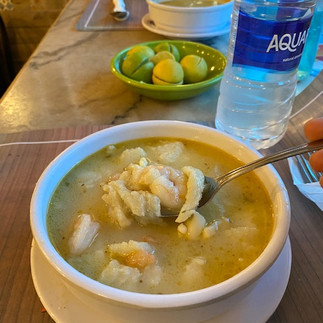







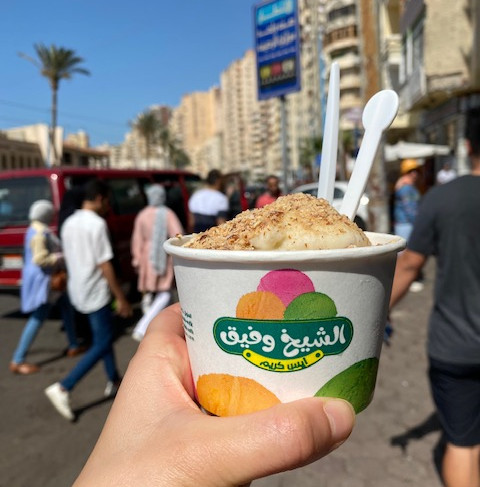

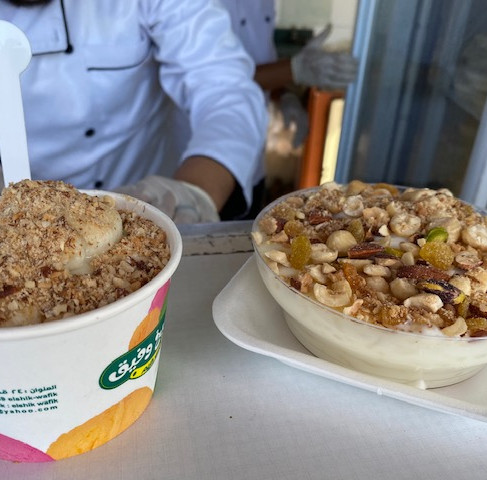





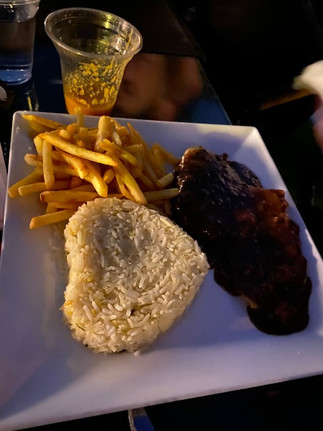























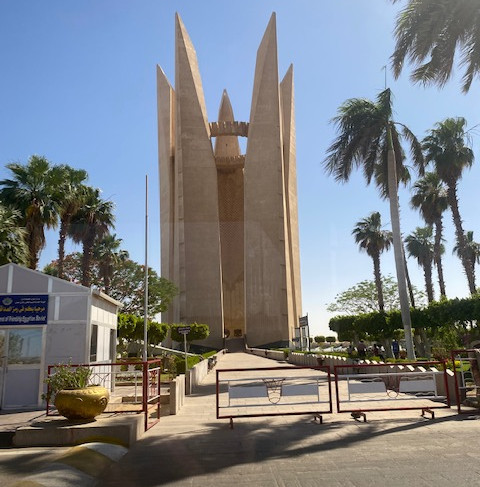

































































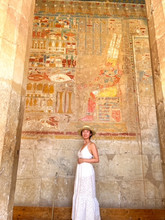













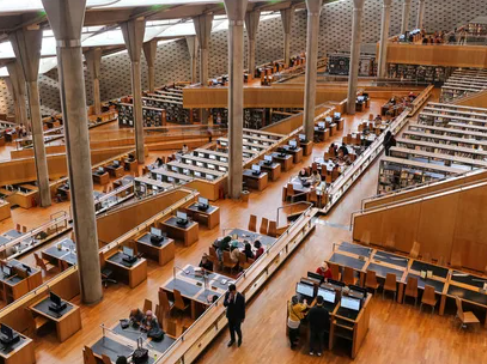





































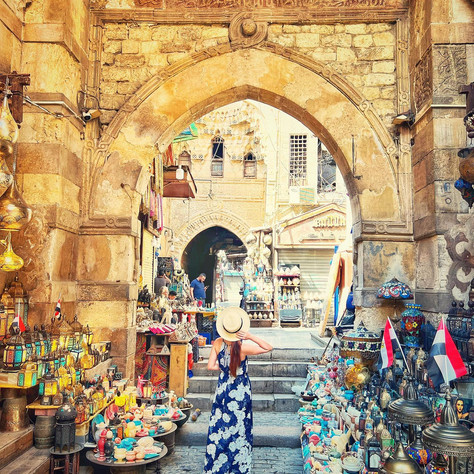











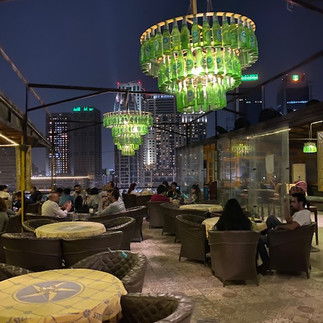








Comments